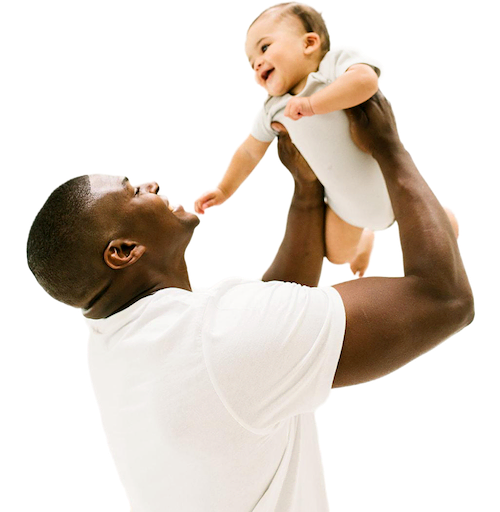Your twenty-two month old is busy with increasing vocabulary, mobility, and independence. But at the same time, you may notice your 22 month old isn’t napping as well or is starting to wake during the night. You’re not alone if sleep starts to get a little more challenging at this age. I’d love to share the answers to the most frequently asked questions about 22 month old sleep schedules, naps, regressions, and more.

The 5–24 Month Collection
stars ( reviews)
Need more help with 22 month old sleep challenges? My 5-24 Month Collection is here for you. I’ll teach you a customizable, step-by-step plan to achieve independent sleep for nights and naps while remaining emotionally connected to your little one. I’ll give you the tools you need to handle nap refusals, separation anxiety, sleep regressions, and any other bump along the way.
Learn MoreWhat are wake windows for a 22 month old? anchor
Wake windows for a 22 month old are about 4-6 hours.
Aim for something like this:
About 5-6 hours after Wake Time = Nap
About 4-5 hours after the end of the Nap = Bedtime
22 Month Sleep Schedule Guidelinesanchor
Every little one is unique and your toddler’s day will depend on when they wake, how long they nap, and individual cues. Try aiming for these age-appropriate guidelines. These are not intended to be a rigid schedule, simply a guide for setting up a flexible routine.

Text version of 22 Month Sleep Guidelines table
| Daytime Feedings: | 3 meals, snacks as needed |
|---|---|
| Goal Daytime Sleep: | 2-3 hours |
| Sweet Spot Bedtime: | 7:00-8:00 pm |
| Number of Naps: | 1 |
| Wake Windows: | 4-6 hours |
For more details on these recommendations, keep reading.
What is a sample schedule for a 22 month old? anchor
Here is a sample schedule for a 22 month old. Keep in mind that this is just an example and your little one’s day to day schedule will vary based on their individual wake windows, when they wake in the morning, how long they nap, and when they eat.

Text version of 22 month sleep schedule table
| Time | Activity |
|---|---|
| 7:00 am | Wake |
| 7:30 am | Breakfast |
| 9:45 am | Snack/Nursing (optional) |
| 12:15 pm | Lunch |
| 12:45 pm -2:45 pm | Nap |
| 3:00 pm | Snack/Nursing (optional) |
| 5:50 pm | Dinner |
| 6:30 pm | Snack/Nursing (optional) |
| 7:25 pm | Bedtime |
How much sleep does a 22 month old need?anchor
Around 22 months, our goal is about 12-14 hours of total sleep in a 24-hour period. We want to aim for 10-12 hours of overnight sleep and 2-3 hours of daytime sleep.
How long should a 22 month old nap? anchor
The goal for naps at 22 months is one 2-3 hour nap in the middle of the day. Keep in mind, you’ll want to wake your toddler if they’re still sleeping at the 3 hour mark. This helps maintain a bedtime between 7:00-8:00 pm and gives your toddler enough active awake time to preserve great night sleep.
If your 22 month old is struggling to get 2-3 hours of daytime sleep, I can help with those short naps or nap refusals. Know that if you continue to struggle, my Toddler Sleep Training will help you understand this new developmental stage so that you can set your days and nights up for sleep success.
What time should a 22 month old go to bed?anchor
Bedtime for a 22 month old is ideally between 7:00-8:00 pm. This tends to be the “sweet spot” that helps babies and toddlers fall asleep and stay asleep during the night. If your toddler’s bedtime is sometimes outside of this range and sleep is going well, you don’t need to worry about making a change.
If bedtime is after 8:00 pm and your 22 month old is fighting bedtime, having night wakings or experiencing early morning wakings, know that a bedtime after 8:00 pm can cause these issues for many toddlers. If this is what you’re seeing, try moving bedtime earlier for a couple weeks to see if it helps.
You may also have some days when daytime sleep is off, like your 22 month old not napping as long as they usually do. If you have a day when daytime sleep doesn’t go as planned, moving bedtime earlier (think as early as 6:00-6:30 pm) can help protect overnight sleep. Consider shifting bedtime earlier if:
A nap was refused or short
Daytime sleep was less than 2 hours total.
It’s been 4 hours since nap time ended and your 22 month old is having a really hard time making it to bedtime, especially if they’re sick.
What are 22 month old milestones?anchor
Please remember that these milestones are based on age ranges and every child develops at their own pace, so your little one may reach these before or after 22 months. Check with your pediatrician if you have any questions or concerns about your 22 month old’s development.
These are some milestones you may notice around 22 months:
Saying more words (50 words by 24 months is the speech milestone). Know that animal sounds, names, and sign language all count as words.
Engaging in more pretend play with toys. You may hear your 22 month old start talking to themselves while playing.
Practicing gross motor skills, like kicking a ball, walking backwards, and maybe even standing on one leg for a few seconds
Experimenting with their growing understanding of cause and effect and testing boundaries.
Expert Tip: Testing boundaries is a normal part of toddler development! You may see your 22 month old seeking a reaction after certain behaviors, “If I do this, what will mommy do?” You may see an increase in tantrums if your toddler gets a different reaction than they’re expecting. Try offering your toddler choices (when possible) to help lessen tantrums.
What are some activities for a 22 month old? anchor
Here are some ideas for activities to try with your 22 month old:
Take turns by doing a stacking activity together. Use “my turn” and “your turn” to help your toddler practice this concept.
Help your toddler identify body parts by placing a gift bow on different body parts, like head, belly, and feet. Once they seem to get the hang of this, you can practice following directions by having them put the bow on their own body parts (“Put the bow on your head”).
Play “Hide and Seek” around the house. Hide a familiar object, like a stuffed animal, and then find it together. You can help your toddler’s vocabulary by using descriptive words like “under," "on," and "in” to describe where the object is hidden.
Get creative with toilet paper rolls. Make tunnels for toy cars, slides for pom poms, and binoculars to play “I Spy.”
I have some favorite toys for your 22 month old here.
Is there a 22 month old sleep regression? anchor
There can be! We do often see a 24 month sleep regression, but every little one develops at their own pace, so you may see signs of this regression at 22 months. Let’s talk about some of the common culprits that can make sleep tricky around this age:
Separation anxiety: This could look like your 22 month old standing in the crib in protest, crying when entering their room, or showing strong preference for one caregiver at bedtime. Validate the feelings, practice short periods of intentional separation, and play games like Peek-a-Boo to help ease separation anxiety at sleep times.
Developmental progression: Being able to practice exciting new skills during awake time makes those skills less exciting when it comes to sleep time.
Wake windows need adjusting: If your 22 month old is on the lower end of the age-appropriate wake window range, gradually add about 10-15 minutes to each wake window. Give them a few days to adjust and then reassess. Be sure to do this gradually to avoid overtiredness.
Overtired: If wake windows were recently increased, try decreasing wake windows a bit to see if this helps. Being overtired can make it hard for your toddler to fall asleep and stay asleep.
Once you’re sure that your little one is healthy and comfortable, continue with your healthy sleep habits. Being consistent with your approach to sleep helps to move through a sleep regression more quickly.
My 22 month old is not napping. What can I do? anchor
Keep offering the nap! I often see nap refusals around 22 months, but the truth is, most toddlers need a nap until around age 4, so don’t drop the nap yet! Here are a few things you can do to set your 22 month old up for nap success:
Prioritize active awake time: Consider adding in more activity during your toddler’s awake time. Splash in the sink or tub (always closely supervise water-related activities), dance in the living room, or take a walk to the mailbox to get out some extra energy. Getting active awake time and being able to move their body helps your toddler be tired enough for consolidated naps.
Check the sleep environment: Setting up an environment that is conducive for sleep is key. To minimize possible stimulation from sounds and light during nap time, we want the room to be really dark (use code Cara for 10% off) and to be continuously humming with the noise from a sound machine (use code CARA20 for 20% off). You’ll also want to check that your toddler is dressed comfortably for sleep, especially as seasons change.
Provide a wind down time: Having 5-10 minutes to wind down before a nap helps your toddler transition from awake time to sleep. Following a simple and predictable nap time routine really does cue your toddler’s brain that it’s time for sleep. Here’s an example: diaper change, zip up sleep sack, sing a song, darken the room, and turn on the sound machine.
Keep offering the nap: Sometimes we set little ones up for nap success with active awake time, a healthy sleep environment, and a wind down routine, but they still refuse to nap. This is an age where toddlers are learning cause and effect, so it's important for you to understand how your toddler is thinking and hold firm to the boundaries.
Know that if you adjust these things and continue to struggle, my Toddler Sleep Training will help you understand this new developmental stage so that you can set your days and nights up for sleep success.
Is 22 months too late to sleep train?anchor
No! It’s never too late to have a great sleeper! If you’re ready to sleep train, the 5–24 Month Collection is a holistic, fully-customizable plan that will allow you to stay emotionally connected to your little one to help you achieve your family’s goals. I’ll guide you through a step-by-step plan for restful nights, consolidated naps, and handling all the bumps along the way.
Still have a 21 month old? Check out my 21 month sleep schedule. Already have a 23 month old? I've got you covered with my 23 month sleep schedules.
References
4 Sources
Mindell et. al. (2008). Developmental aspects of sleep hygiene: Findings from the 2004 National Sleep Foundation Sleep in America Poll
Mindell and Williamson. (2017). Benefits of a bedtime routine in young children: Sleep, development, and beyond
Paruthi et. al. (2016). Recommended Amount of Sleep for Pediatric Populations: A Consensus Statement of the American Academy of Sleep Medicine
Tham, Schneider, and Broekman. (2017). Infant sleep and its relation with cognition and growth: a narrative review
Keep in mind that the information and content on this blog is for informational purposes and should not be considered medical advice. If you have questions about your child, please reach out to your doctor.








